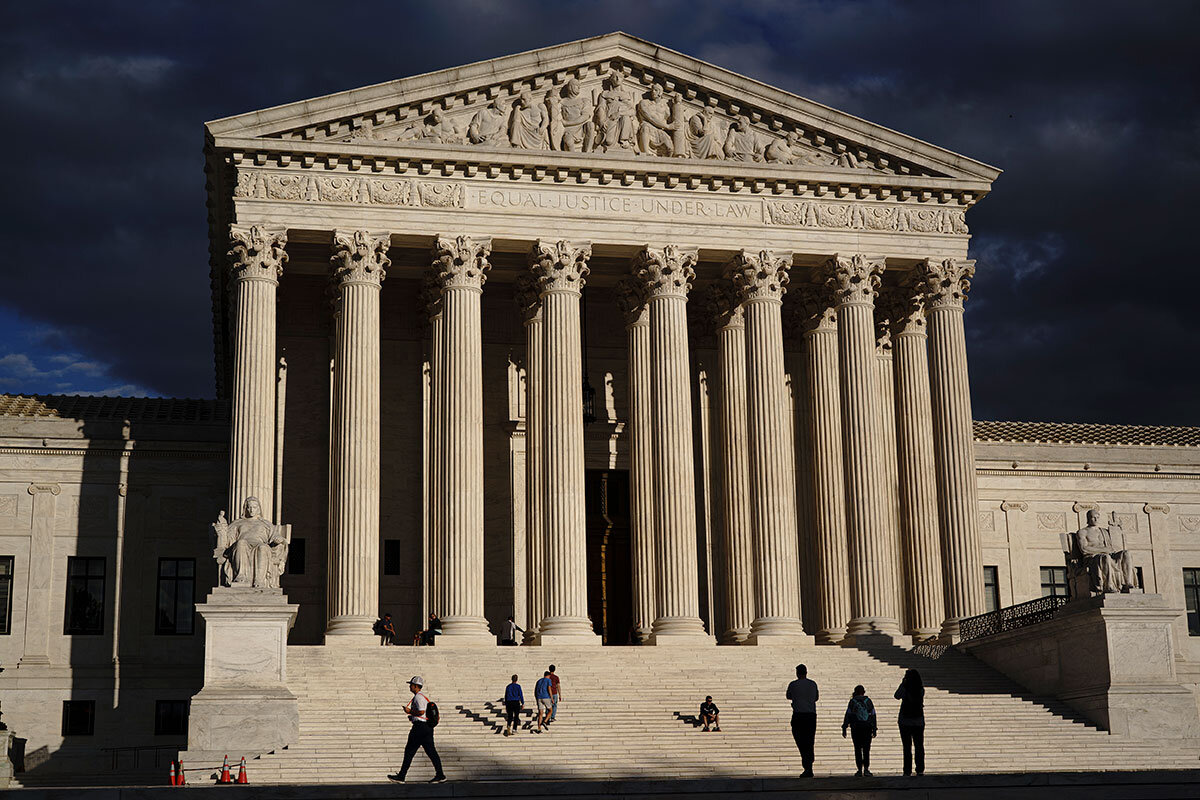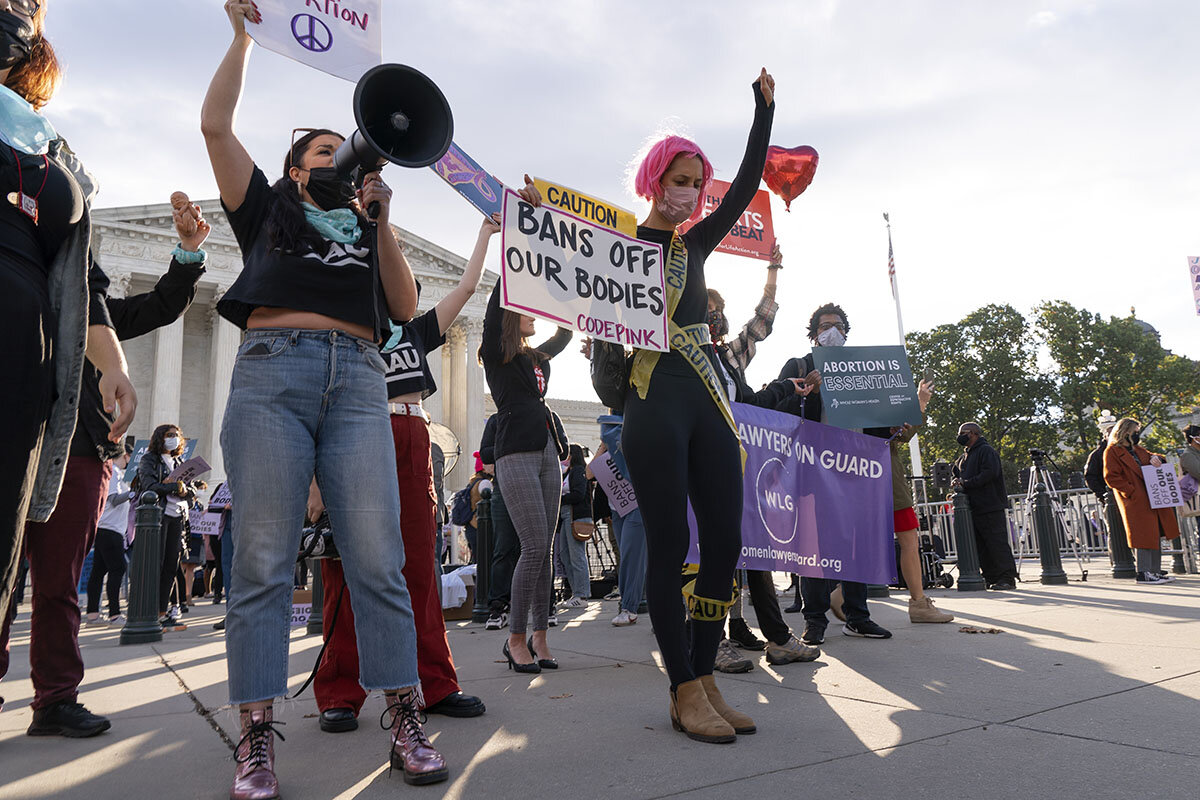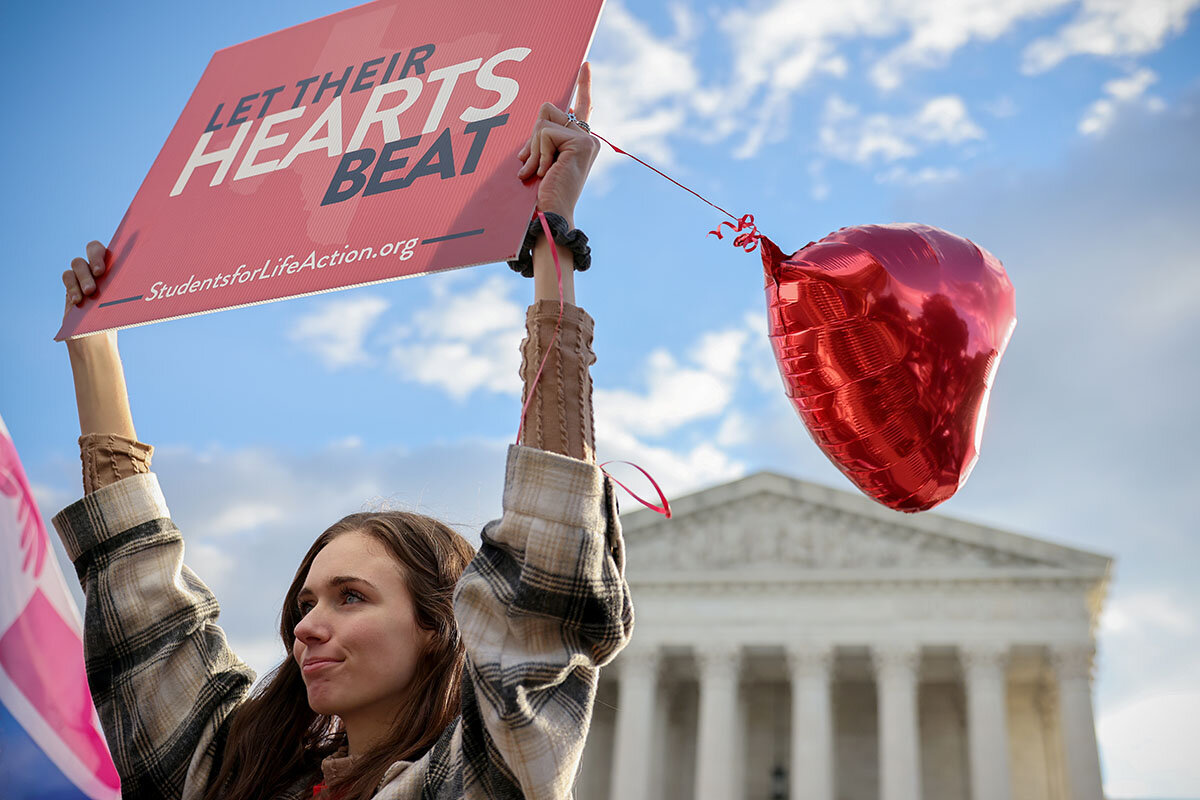In Texas abortion cases, hints of new Supreme Court transparency
Loading...
In a marathon three hours of oral arguments today, the United States Supreme Court continued its rapid handling of a controversial Texas law that effectively outlaws abortion in the state.
The constitutional right to abortion is not at issue, but two cases brought in front of the court at breakneck speed still raise significant questions about the judicial review process and the constitutional doctrine of federal law’s supremacy over state legislation. More broadly, the cases represent another move from the justices toward increased transparency, on the heels of widespread criticism earlier this fall for their handling of the same Texas law on the court’s so-called “shadow docket.”
Two months ago, the court declined to block the Texas law known as Senate Bill 8 (SB8) from going into effect pending court review in an unsigned, one-and-a-half page issued late at night. While it was all standard practice for a case on the court’s “shadow docket” – those cases, often emergency requests, the court hears without full briefing or argument – it prompted widespread criticism, including from Justice Elena Kagan in dissent, of the court’s increasing use of the shadow docket to decide significant issues outside of public view.
Why We Wrote This
As it hears two key cases and wades deeper into what’s poised to be a scrutinized term, the U.S. high court appears also to be more responsive to a public call for greater transparency.
Today, the court did the opposite. Just 10 days after agreeing to hear the case – the fastest the court has moved from granting a petition to hearing it argued since 2000, court watchers say – the public was able to hear the justices interrogate lawyers over SB8 and some weighty questions related to it.
The justices “didn’t see it as a very urgent question” in September, says Mary Ziegler, a professor at Florida State University College of Law. But over the course of two months, SB8 has moved from the shadow docket to not just the court’s merits docket, but its “rocket docket.”
“It’s hard to read this as not in some ways being responsive to public outcry,” she says. “Taking SB8 seriously is at least an effort to change the narrative and change peoples’ perceptions of the court.”
Tough questions
SB8 bans women in Texas from getting an abortion after six weeks, before most women know they’re pregnant. Over a dozen states have passed similar laws, but all were blocked by federal courts. The Texas law is unique in the sense that it delegates enforcement of the law to the public via a “bounty” scheme, which has served to insulate the law from the kind of preemptive judicial review that has blocked other strict abortion regulations.
The two cases the court heard today address both that question – whether a state can insulate a law from federal court review through a public “bounty” system – and another: whether the federal government can sue to block SB8 from being enforced.
If the justices allow SB8 to stand, “we can assume that this would be across the board equally applicable ... to all constitutional rights?” asked Justice Brett Kavanaugh. “Second Amendment rights, free exercise religion rights, free speech rights could be targeted by other states?”
Yes, but individual parties could appeal to Congress to pass laws protecting those rights, replied Texas Solicitor General Judd Stone. This prompted Justice Kagan to jump in.
“Isn’t the point of a right that you don’t have to ask Congress?” she asked. “Isn’t the point of a right that it doesn’t really matter what Congress thinks, or what the majority of the American people think as to that right?”
Similarly, allowing the Justice Department to sue Texas could open the door to the federal government aggressively litigating to block state laws it doesn’t like.
“You say this case is very narrow, it’s rare, it’s particularly problematic. But the authority you assert to respond to it is as broad as can be,” Chief Justice John Roberts told Elizabeth Prelogar, the U.S. solicitor general. “What is the limiting principle?” he asked. “What are we going to be able to point to [in the future] that says no you can’t invoke that broad equity power?”
The justices also wrestled with the two cases in harmony, and questions of how a decision in one case could affect another.
If the court allows the SB8 model to stand, said Solicitor General Prelogar, then Texas “can nullify this court’s precedents.”
“Then no constitutional right is safe,” she added. And “the United States has a special interest to intervene to protect the supremacy of federal law.”
In that context, Jonathan Adler, a professor at Case Western Reserve University School of Law, is pleased the court is handling them on its merits docket, in full public view. “There is a downside to speed,” he says. But “it’s good that they’re capable of doing this.”
“It’s preferable to issuing an order at 8 o’clock on a Thursday, without oral argument, and giving us a paragraph” opinion, he adds.
More clarity from the court
The high court has made other changes in recent months that should improve transparency.
After broadcasting live audio of telephonic oral arguments during the pandemic last term, in-person arguments are still being broadcast live.
The court has also changed the format of oral arguments, allowing each justice to ask specific questions in order of seniority after a period of traditional free-for-all questioning. While questions can’t be considered a predictor of how justices will rule, the change to make it easier for female justices in particular to make their voices heard, after studies showed they were interrupted more than their male colleagues.
Professor Adler notes that not “every idea that has been proposed under the guise of transparency is a good one.” Publicizing every justice’s vote on every preliminary or emergency order, for example, risks causing them to “lock in” that vote despite what they may hear as a case progresses.
And there can be drawbacks to the court moving at the speed it’s moved with the SB8 cases.
The 1942 case Ex parte Quirin, decided the day after it was argued in July 1942, saw the court rule that German saboteurs caught in the U.S. were unlawful enemy combatants who could be tried by military commissions. The ruling has since been used to justify in the same way.
Bush v. Gore – taken up and decided by the court over a four-day span in December 2000 – resulted in an unsigned ruling based on a controversial equal protection rationale. Justice Antonin Scalia (who joined the majority) later disparaged the equal protection reasoning, according to a 2019 biography of Justice Sandra Day O’Connor. And while some federal judges don’t consider it precedent, it has election law.
There aren’t signs the court will want to resolve these cases with such speed – both Quirin and Bush v. Gore involved issues of national import that arguably demanded quicker resolution than SB8 does. That said, the expedited review the court has given in the SB8 cases “might be a good model” to follow in select situations, says Lawrence Baum, a political science professor at Ohio State University and author of “Ideology in the Supreme Court.”
“If they feel there’s a need to give a closer look, and a more public look, to the kinds of preliminary [cases] that are highly consequential,” it will be “an option they have to consider,” he adds. “Though I doubt the justices will want to do it all the time.”
Meanwhile, the court continues to load its docket this term with high-profile cases. In two days, it will hear a major gun rights case; next month it will hear cases on abortion and public funding for religious schools; next year it will hear a case on carbon emission regulations. Most experts expect that by the end of the term the law will be further, perhaps much further, than it is right now. With public approval of the court also at in recent months, the court may feel pressure to be more public with its deliberations.
Today’s arguments can, in the circumstances, be marked as a win for transparency advocates. It remains to be seen, in what will be a blockbuster term, how transparent the court will want to be.
“I’m reading [the SB8 arguments] as a big shore-up of the legitimacy of the court, while still moving [the law] in a conservative direction,” says Professor Ziegler.
“One of the big questions going forward is if it can thread that needle,” she adds. “We might be at a kind of inflection point where the court has to decide how important transparency is to it.”







